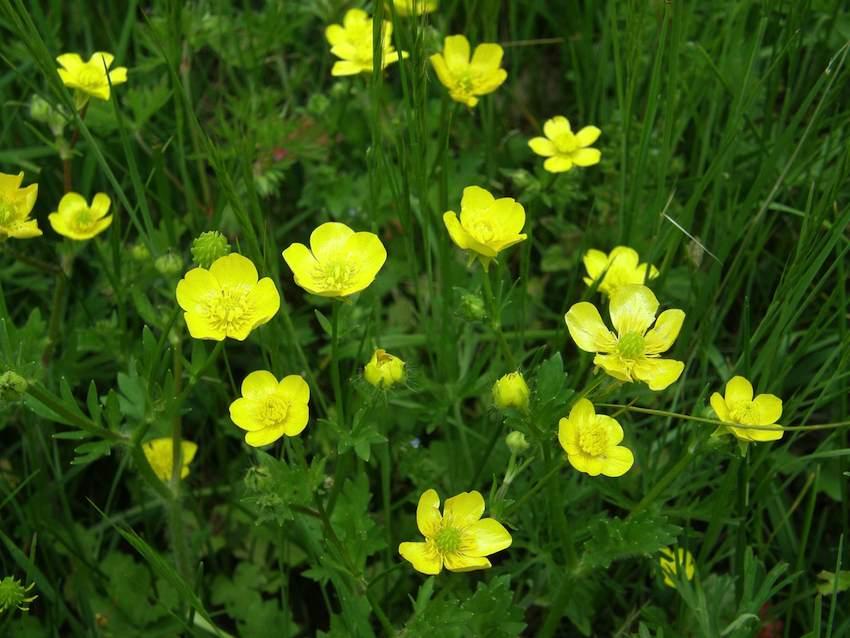California Coast Algae Bloom: Threats To Marine Ecosystems

Table of Contents
Harmful Algal Blooms (HABs) and Their Toxins
Harmful algal blooms (HABs) are rapid increases in the population of harmful algae species. Unlike beneficial phytoplankton, HABs produce potent toxins that accumulate in the food web, causing significant harm. These blooms are particularly dangerous due to the potency and widespread impact of their toxins. Several types of toxins are produced by HABs found along the California coast, including domoic acid and brevetoxins.
- Domoic acid, produced by species like Pseudo-nitzschia, causes amnesic shellfish poisoning (ASP) in humans and neurological damage in marine mammals and birds, leading to seizures, memory loss, and even death.
- Brevetoxins, produced by Karenia brevis, cause neurotoxic shellfish poisoning (NSP) and respiratory irritation in humans, impacting both marine life and coastal communities. Exposure can cause breathing difficulties and other health problems.
- Other HAB species prevalent in California waters include Alexandrium catenella, which produces paralytic shellfish toxins (PSTs), and Dinophysis, which produces diarrhetic shellfish toxins (DSTs).
The effects on marine wildlife are catastrophic: Neurological damage in marine mammals and birds, shellfish contamination leading to human health risks, and respiratory issues in humans near affected areas. These toxins disrupt the entire food web, impacting everything from microscopic organisms to large marine mammals.
Oxygen Depletion and Hypoxia
The proliferation of algae during a bloom, followed by their decomposition, leads to a process called eutrophication. This process depletes oxygen levels in coastal waters, creating hypoxic (low-oxygen) or anoxic (no-oxygen) zones. This oxygen depletion has devastating effects on marine life.
- Fish kills and habitat loss: Many marine organisms cannot survive in low-oxygen environments, leading to mass fish kills and the destruction of essential habitats.
- Impact on benthic communities: Benthic organisms, those living on the seafloor, are particularly vulnerable to hypoxia as oxygen levels are typically lower near the seabed.
- Changes in species diversity and abundance: Hypoxia alters the composition of marine communities, favoring species tolerant of low-oxygen conditions while causing declines in more sensitive species.
- Agricultural runoff, carrying excess nutrients like nitrogen and phosphorus, significantly contributes to eutrophication and subsequent hypoxia. These nutrients act as fertilizers, fueling the rapid growth of algae.
Economic Impacts of California Coast Algae Blooms
The economic repercussions of California coast algae blooms are substantial and far-reaching, affecting multiple sectors.
- Reduced shellfish harvests and fishing closures: When shellfish become contaminated with toxins, harvesting is halted, causing significant losses for the fishing industry. This closure can impact coastal communities heavily dependent on these harvests.
- Loss of revenue for tourism-related businesses: Harmful algal blooms can lead to beach closures, impacting tourism and recreational activities, with significant consequences for local businesses. The unsightly appearance of blooms can deter tourists as well.
- Increased government spending on research and management: Monitoring, mitigation, and cleanup efforts related to HABs require considerable government investment. This funding is often diverted from other important environmental programs.
- Impact on coastal communities dependent on marine resources: Coastal communities that rely heavily on fishing and tourism are particularly vulnerable to the economic shocks caused by HABs.
The Role of Climate Change in Worsening Algae Blooms
Climate change significantly exacerbates the problem of California coast algae blooms.
- Increased nutrient levels due to warmer temperatures: Warmer waters can increase nutrient availability, fueling algae growth.
- Changes in ocean stratification affecting nutrient cycling: Changes in ocean currents and stratification can lead to more nutrient-rich waters reaching the surface, stimulating algae growth.
- Potential for more toxic species to thrive: Warmer temperatures may favor the growth of more toxic algal species.
- Long-term effects on ecosystem resilience: Frequent and intense blooms reduce the resilience of coastal ecosystems, making them more susceptible to future disturbances.
Conclusion
California coast algae blooms pose a significant threat to the health of our marine ecosystems and the economic well-being of coastal communities. The toxins produced by HABs, the oxygen depletion caused by eutrophication, and the economic consequences of fishing closures and tourism losses all contribute to a complex and urgent problem exacerbated by climate change. It is crucial to understand the dangers of California coast algae blooms and take proactive steps to mitigate their impact. Learn more about the dangers of California coast algae blooms and how you can help by supporting organizations dedicated to HAB research and mitigation, advocating for policies that reduce nutrient runoff and address climate change, and making informed choices to protect our precious coastal resources. Take action to protect our coast from devastating California coast algae blooms.

Featured Posts
-
 Savvato 10 5 Olokliromenos Odigos Tileoptikon Programmaton
May 30, 2025
Savvato 10 5 Olokliromenos Odigos Tileoptikon Programmaton
May 30, 2025 -
 Plires Programma Tileoptikon Ekpompon 11 5
May 30, 2025
Plires Programma Tileoptikon Ekpompon 11 5
May 30, 2025 -
 Jon Jones And Tom Aspinall Why A Fight Is Risky For Jones
May 30, 2025
Jon Jones And Tom Aspinall Why A Fight Is Risky For Jones
May 30, 2025 -
 Preoccupations Des Parents D Eleves De Bouton D Or Remplacement Des Rats A Florange
May 30, 2025
Preoccupations Des Parents D Eleves De Bouton D Or Remplacement Des Rats A Florange
May 30, 2025 -
 Golacos E Emocao Manchester United E Arsenal Empatam
May 30, 2025
Golacos E Emocao Manchester United E Arsenal Empatam
May 30, 2025
